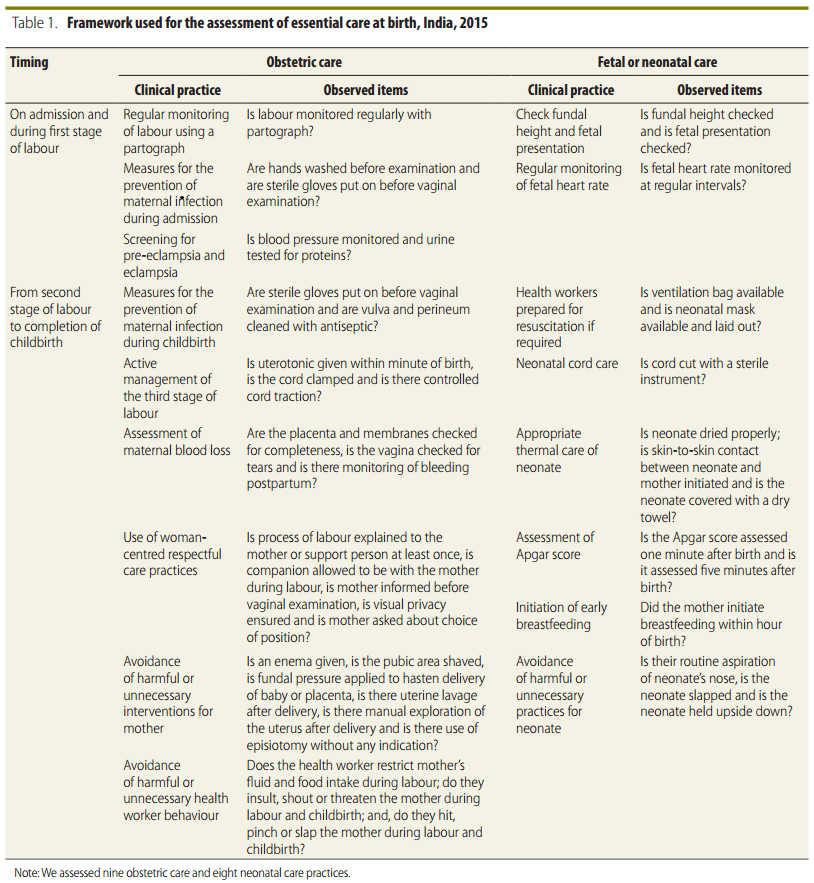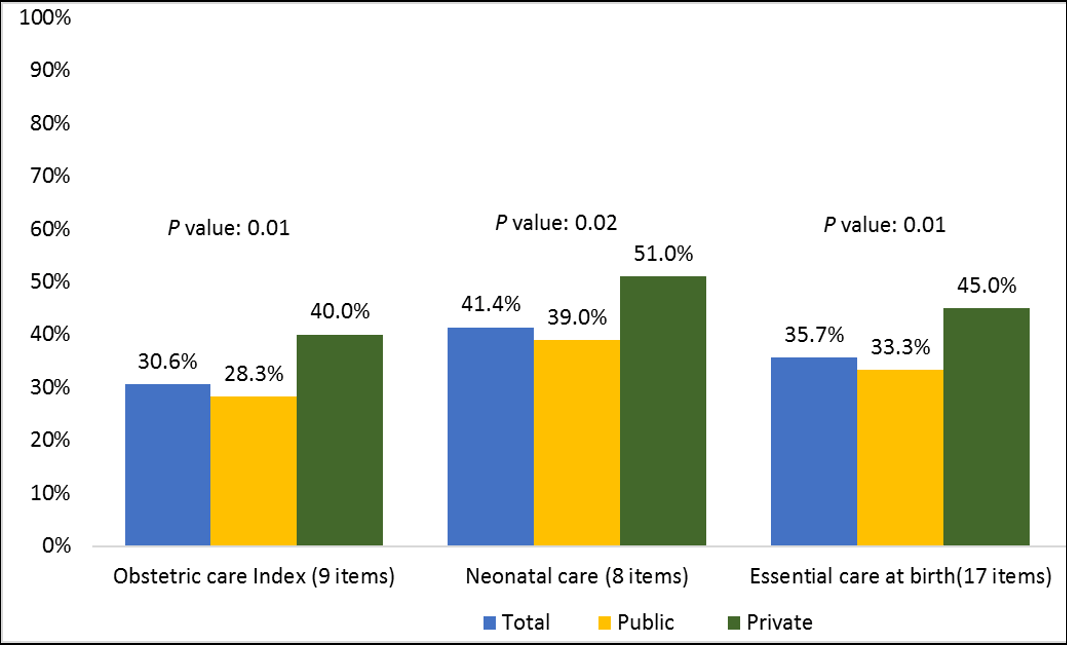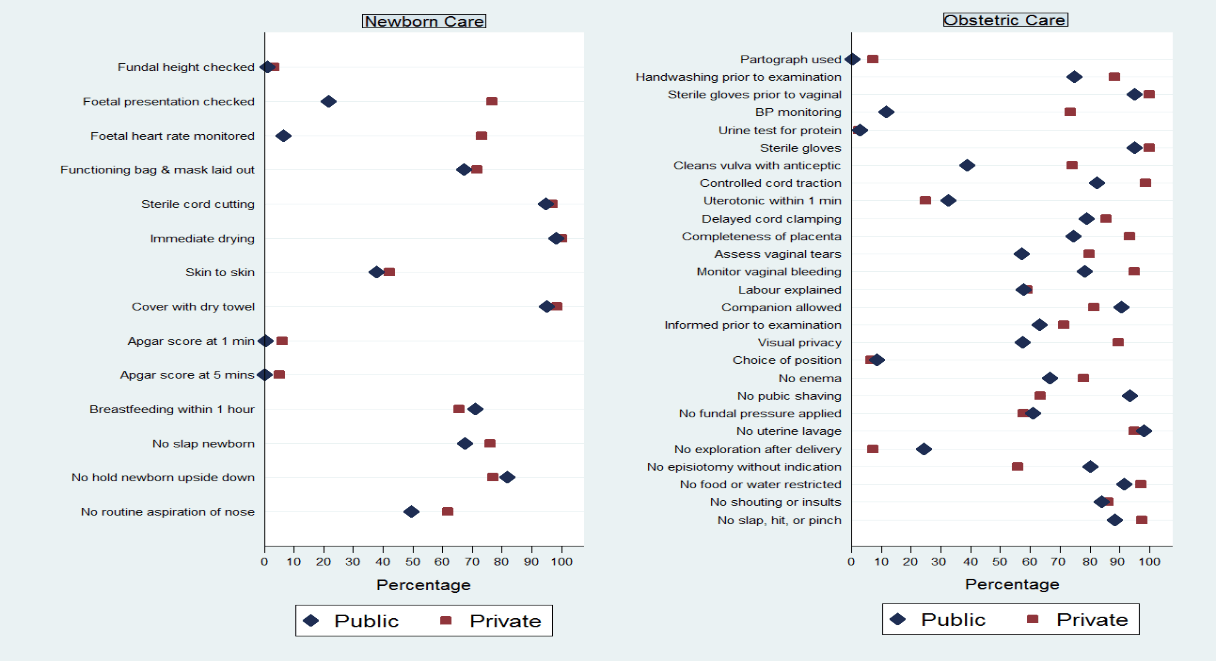Blog
Quality of routine labor and delivery care in Uttar Pradesh, India
Are private facilities better?
In India, the percentage of women who delivered in a health facility increased from roughly 35% in 2000 to 79% in 2014. Despite this progress, given India’s massive population, 15% of global maternal deaths took place in India in 2015, suggesting substantial gaps in quality of care at the time of birth. Researchers have noted that women in India tend to associate private facilities with higher quality of care compared to public facilities. While studies of public facilities in India have indicated generally poor quality of care, evidence from private facilities—particularly for normal labor and delivery—is scarce.
Measuring quality of care in public and private facilities
In an effort to address this evidence gap, a recent article from the Bulletin of the World Health Organization assessed the quality of essential obstetric and newborn care during routine labor and delivery in Uttar Pradesh, India. The authors from the London School of Hygiene & Tropical Medicine and Sambodhi Research and Communications conducted clinical observations of 275 mother-newborn pairs at 18 public facilities and eight private facilities in Uttar Pradesh. For each clinical observation, the authors assessed 42 items related to quality of care and, using a comprehensive framework, mapped their observations onto 17 essential obstetric and neonatal care practices:

The researchers found poor quality of care in both public and private facilities. Unqualified personnel were found to provide institutional maternity care in up to 59% of all deliveries, and a number of life-saving clinical practices such as partograph use for monitoring labor, screening for pre-eclampsia/eclampsia and active management of the third stage of labor were rarely observed. Additionally, researchers noted the provision of women-centered, respectful maternity care practices in just 4% of deliveries.
Overall, 45% of recommended practices were completed for women giving birth in the private sector compared to 33% in the public sector. For obstetric care, private sector clients received 40% of the recommended practices compared to 28% in the public sector. Similarly, 51% of the recommended neonatal care practices were completed in the private sector compared to 39% in the public sector:

The authors also found a statistically significant difference between sectors for specific indicators: Regular partograph use for monitoring labor, assessment of maternal blood loss after childbirth and measures for the prevention of maternal infection during childbirth were performed more frequently in the private sector compared to the public sector:

Implications for research, policy and practice
According to the authors, the findings from this study have several implications for global maternal health research, policy and practice:
'A systematic effort to measure and identify quality gaps during labor and childbirth is required, particularly in high-burden settings in India and elsewhere'.
'There should be further research to identify the reasons for unqualified personnel providing institutional maternity services in both public and private sector facilities'.
'The private sector provides a substantial and increasing proportion of maternity services across the world. Therefore, research, programs, policy and advocacy efforts to improve quality of care at the time of birth should also include private sector facilities',
'We need to develop tailored quality improvement initiatives at facilities in both sectors with regular auditing of the actual care processes and link these to functional accountability mechanisms'.
The views expressed in this piece are those of the author(s), and do not necessarily reflect the views of the Institute or the United Nations University, nor the programme/project donors.
Read more on the papers published in the WHO Bulletin theme issue 'Measuring quality of care' at the UNU-WIDER's lauch event website.
This article was originally published by Maternal Health Task Force blog.
 Join the network
Join the network